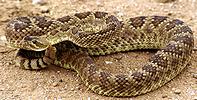Unless you've been off planet, you know that various extremist lefties, PC wimps and assorted anti-White bigots have for years been trying to deny the existence of races of humans.
Of course, this is absurd. So absurd, in fact, that eventually, when the PC dinosaurs pass from the scene, people will understand that not only are there different races of humans, but that what are currently thought of as the major human races will actually be classified as subspecies.
We humans are part of nature and we are the products of the natural forces of evolution that are seen throughout nature.
Evolution is all about divergence--a constant tinkering and engineering with flesh and making new models to survive in ever changing conditions. This is why there are different races (actually subspecies) of humans and why there are different races, subspecies and species of every type of organism. It is also why science will never be able to classify all species and why new species are constantly being discovered--nature keeps inventing new ones built on what went before but with some modifications.
Comes now this article HERE on how a particularly venomous species of rattlesnake--the Mojave rattler--is now showing up in New Mexico. The point I want to make about this is that it is foolish for humans to think that all humans are one race. Nature doesn't work that way. Our eyes tell us we're not all the same. Medical science tells us that we're not all the same. Statistics of behaviors and abilities tell us that we're not all the same. So, why would anyone believe that we're all the same? It's nuts.
Anyway, back to our lesson given to us by nature about rattlesnakes--a lesson that we should be able to analogize to humans if we can but rid ourselves of the false belief in a one- size-fits-all samey-same human type that society has filled us with.
This species of rattlesnake--the Mojave rattler, remember-- looks much like many other species of rattlesnakes and the easiest way to distinguish it is that at the end of its tail it has white bands that are thicker than its black bands. Just a minor visible difference. However, the real difference with the Mojave rattler is internal. It's venom is much stronger than the venom of many other rattlers and if you're bitten by one, you need to be treated with a different anti-venom if you hope to survive.
Now, if you want to apply PC principles to rattlesnakes and say they are all the same under the skin, and if you handle the Mojave rattler as you might handle some other rattlesnakes, you're likely to be pushing up daises.
And, just to drive the point home about the differences among seemingly similar organisms (including humans), HERE'S a list of the different species of rattlesnakes. By the way, most of the various species of rattlesnakes (and there are many different species) look more alike than do the human races look like each other.
# # # |



